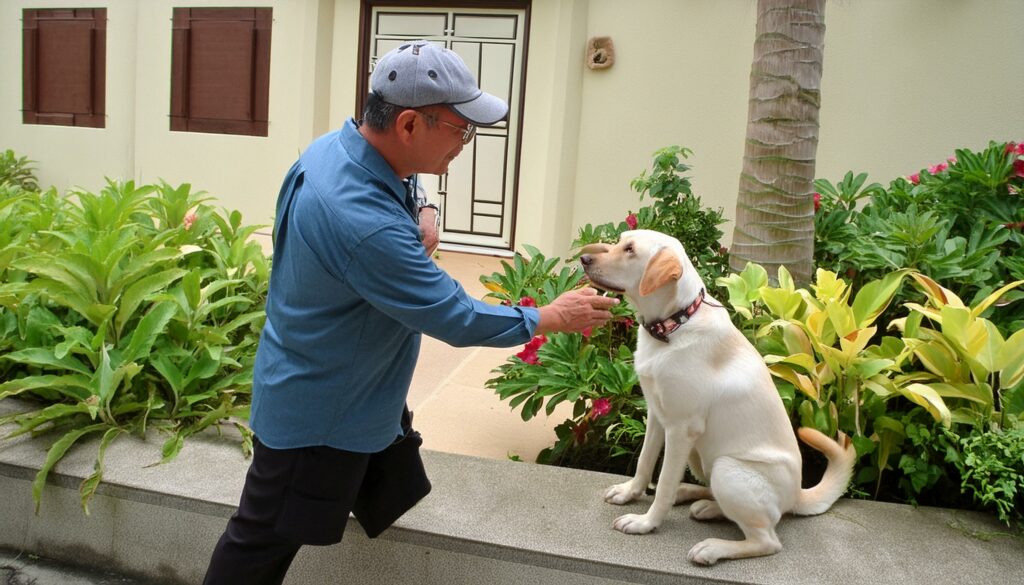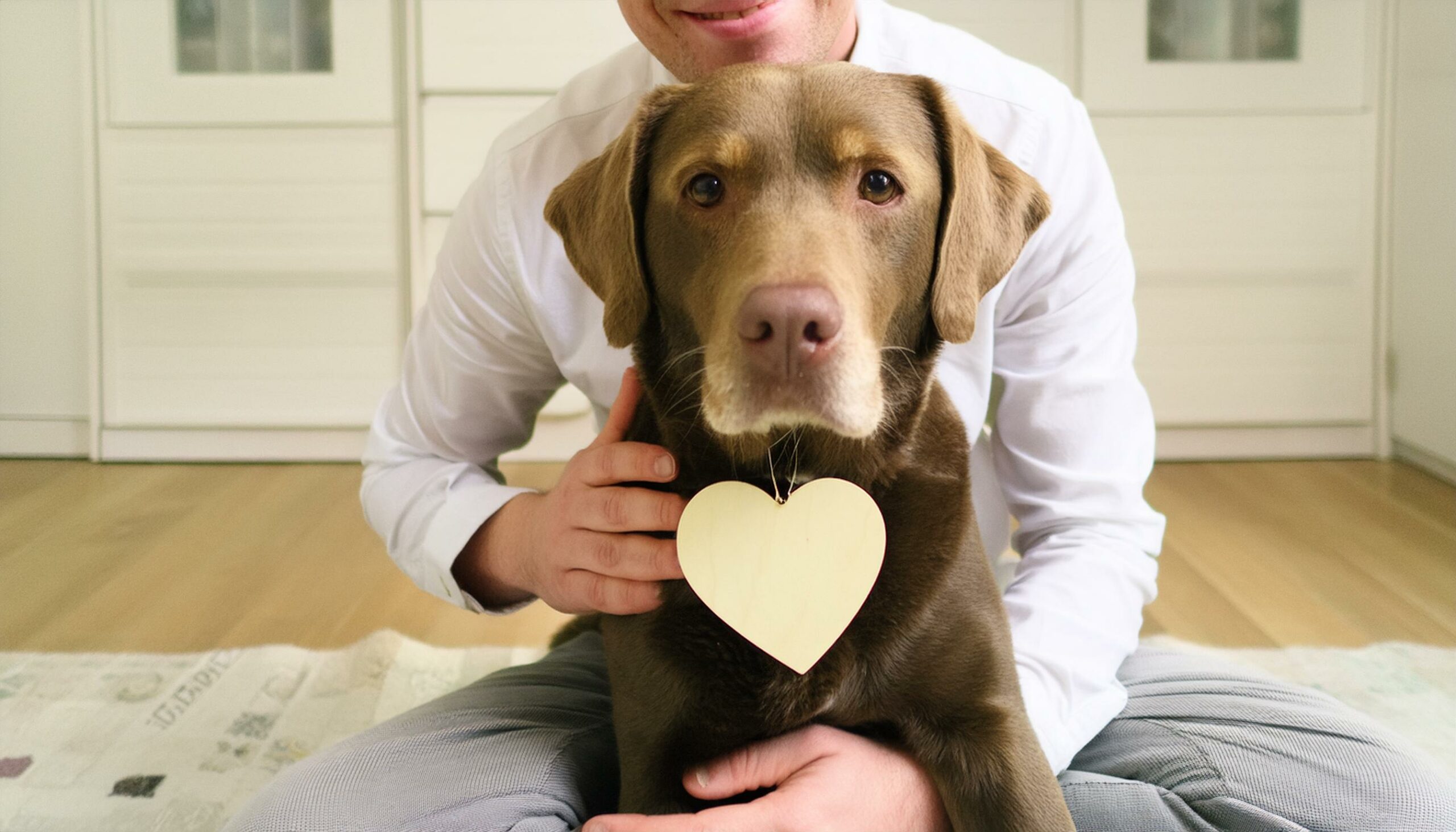Labs are more than just pets; they are beloved members of the family. As a Labrador Retriever owner, you understand the importance of showing your furry friend how much they mean to you. But how can you effectively express your love to your lab? Let’s delve into some practical strategies that will strengthen your bond and ensure your lab feels cherished and valued.
Understanding Your Lab’s Needs
Recognizing Emotional Cues
Labrador Retrievers are incredibly expressive dogs, and they communicate their feelings through various cues. Pay close attention to their body language, facial expressions, and vocalizations. A wagging tail, relaxed posture, and bright eyes indicate happiness and contentment, while flattened ears, tucked tail, and whimpering may signal fear or anxiety. By understanding your lab’s emotional cues, you can better respond to their needs and provide comfort when necessary.
Providing Physical Comfort
Physical touch is a powerful way to express love and affection to your lab. Take time each day to cuddle, pet, and massage your furry friend. Many labs enjoy belly rubs, ear scratches, and gentle pats on the head. These simple gestures not only strengthen your bond but also promote relaxation and reduce stress. Remember to respect your lab’s personal space and comfort level, and always approach them with gentleness and kindness.
Ensuring Mental Stimulation
Labrador Retrievers are intelligent and active dogs that thrive on mental stimulation. Engage your lab in brain games, puzzle toys, and interactive training sessions to keep their mind sharp and engaged. Consider enrolling them in obedience classes, agility courses, or scent work activities to challenge their intellect and satisfy their natural curiosity. Mental stimulation not only prevents boredom and destructive behaviors but also deepens your bond as you work together as a team.
Building a Strong Bond

Spend Quality Time Together
Quality time is essential for strengthening your bond with your lab. Make it a priority to spend dedicated one-on-one time with your furry friend each day. Whether it’s going for a long walk in the park, playing fetch in the backyard, or simply snuggling on the couch, cherish these moments of connection and companionship. Your lab will appreciate the undivided attention and love you shower upon them.
Positive Reinforcement
Positive reinforcement is a highly effective way to show love and appreciation to your lab. Whenever your furry friend exhibits desirable behaviors, such as following commands, using the bathroom outside, or playing nicely with others, praise them lavishly and offer tasty treats as rewards. Positive reinforcement not only reinforces good behavior but also strengthens the bond between you and your lab. It creates a positive association with obeying commands and encourages them to repeat these behaviors in the future.
Communication Is Key
Effective communication is the cornerstone of a strong bond between you and your lab. Establish clear cues and commands that your lab can easily understand and follow. Use a consistent tone of voice and body language to convey your expectations and intentions. Whether it’s teaching basic obedience commands like sit, stay, and come or communicating your love through affectionate words and gestures, clarity and consistency are key. Open lines of communication build trust and understanding, fostering a deeper emotional connection between you and your lab.
Health and Wellness
Regular Exercise Routine
Physical exercise is vital for your lab’s health and well-being. Engage them in daily exercise routines that suit their age, breed, and energy level. Take them for brisk walks, runs, or hikes to burn off excess energy and maintain a healthy weight. Provide opportunities for off-leash play in a safe, enclosed area where they can run, jump, and explore to their heart’s content. Regular exercise not only keeps your lab physically fit but also promotes mental stimulation and prevents boredom.
Nutritious Diet
A balanced and nutritious diet is essential for your lab’s overall health and longevity. Feed them high-quality dog food that is appropriate for their age, size, and activity level. Choose formulas that contain real meat, whole grains, fruits, and vegetables to provide essential nutrients and support their immune system. Avoid feeding your lab table scraps, fatty foods, and excessive treats, as these can lead to obesity, digestive issues, and other health problems. Consult your veterinarian for personalized dietary recommendations and feeding guidelines based on your lab’s specific needs.
Routine Vet Check-ups
Regular veterinary check-ups are crucial for maintaining your lab’s health and detecting any potential issues early on. Schedule annual wellness exams with your veterinarian to assess your lab’s overall health, administer vaccinations, and discuss preventive care measures. Your vet can also provide guidance on parasite prevention, dental care, and nutrition to ensure your lab stays happy and healthy for years to come. Be proactive about your lab’s healthcare needs and address any concerns promptly to prevent serious health issues from arising.
Tailoring Your Approach
Individual Preferences
Every lab is unique, with their own preferences and personality quirks. Take the time to observe and understand what makes your furry friend happy and comfortable. Some labs may enjoy cuddling on the couch, while others prefer fetching a ball in the backyard. Respect their individual preferences and tailor your interactions accordingly. By catering to their likes and dislikes, you show your lab that you value and appreciate them as an individual.
Learning Their Language
Labrador Retrievers communicate through a combination of vocalizations, body language, and facial expressions. Learn to interpret your lab’s signals and respond appropriately. Pay attention to their barks, whines, and growls, as well as their posture, tail position, and facial expressions. By understanding their language, you can anticipate their needs, alleviate their fears, and strengthen your bond through clear and effective communication.
Adapting to Their Personality
Just like humans, Labrador Retrievers have distinct personalities and temperaments. Some labs may be outgoing and social, while others are more reserved and independent. Adapt your approach to suit your lab’s personality and comfort level. If your lab is shy or anxious in new situations, provide reassurance and support to help them feel safe and secure. If they’re bold and adventurous, encourage their exploratory nature while keeping them safe from harm. By respecting their personality traits, you can build a deeper connection with your lab based on mutual trust and understanding.
Conclusion
Showing your lab you love them is about more than just words; it’s about actions and behaviors that demonstrate your commitment and affection. By understanding their needs, building a strong bond, prioritizing their health and wellness, and tailoring your approach to their individuality, you can cultivate a loving and fulfilling relationship with your loyal companion. Cherish every moment you spend together, and remember that your lab’s unconditional love is one of life’s greatest gifts.
FAQs
How can I tell if my lab feels loved?
Look for signs of contentment such as relaxed body language, wagging tails, and seeking physical affection.
Is it important to socialize my lab with other dogs?
Yes, socialization is crucial for your lab’s development, helping them learn proper behavior and communication skills.
Can I show love to my lab through training?
Absolutely! Training sessions provide opportunities for bonding, mental stimulation, and positive reinforcement.
What are some signs that my lab is unhappy?
Signs of unhappiness may include decreased appetite, excessive whining, lethargy, or avoiding interaction.
How often should I groom my lab?
Aim to groom your lab regularly, including brushing their coat, trimming nails, and cleaning ears, as needed.
